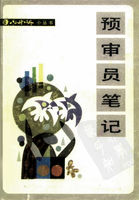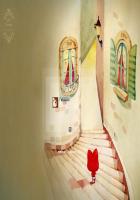THE LEADING SOCIETY OF SOULANGES
About six kilometres (speaking legally) from Blangy, and at the same distance from Ville-aux-Fayes, on an elevation radiating from the long hillside at the foot of which flows the Avonne, stands the little town of Soulanges, surnamed La Jolie, with, perhaps, more right to that title than Mantes.
At the foot of the hill, the Thune broadens over a clay bottom to a space of some seventy acres, at the end of which the Soulanges mills, placed on numerous little islets, present as graceful a group of buildings as any landscape architect could devise.After watering the park of Soulanges, where it feeds various other streams and artificial lakes, the Thune falls into the Avonne through a fine broad channel.
The chateau of Soulanges, rebuilt under Louis XIV.from designs of Jules Mansart, and one of the finest in Burgundy, stands facing the town; so that Soulanges and its chateau mutually present to each other a charming and even elegant vista.The main road winds between the town and the pond, called by the country people, rather pompously, the lake of Soulanges.
The little town is one of those natural compositions which are extremely rare in France, where PRETTINESS of its own kind is absolutely wanting.Here you would indeed find, as Blondet said in his letter, the charm of Switzerland, the prettiness of the environs of Neuf-chatel; while the bright vineyards which encircle Soulanges complete the resemblance,--leaving out, be it said, the Alps and the Jura.The streets, placed one above another on the slope of the hill, have but few houses; for each house stands in its own garden, which produces a mass of greenery rarely seen in a town.The roofs, red or blue, rising among flower-gardens, trees, and trellised terraces, present an harmonious variety of aspects.
The church, an old Middle-Age structure, built of stone, thanks to the munificence of the lords of Soulanges, who reserved for themselves first a chapel near the chancel, then a crypt as their necropolis, has, by way of portal, an immense arcade, like that of the church at Lonjumeau, and is bordered by flower-beds adorned with statues, and flanked on either side by columns with niches, which terminate in spires.This portal, often seen in churches of the same period when chance has saved them from the ravages of Calvinism, is surmounted by a triglyph, above which stands a statue of the Virgin holding the infant Jesus.The sides of the structure are externally of five arches, defined by stone ribs and lighted by windows with small panes.
The apse rests on arched abutments that are worthy of a cathedral.The clock-tower, placed in a transept of the cross, is square and surmounted by a belfry.The church can be seen from a great distance, for it stands at the top of the great square, at the lower end of which the high-road passes through the town.
This square, large for the size of the town, is surrounded by very original buildings, all of different epochs.Many, half-wood, half-
brick, with their timbers faced with slate, date back to the Middle Ages.Others, of stone, with balconies, show the form of gable so dear to our ancestors, which belongs to the twelfth century.Several charm the eye with those old projecting beams, carved with grotesque faces, which form the roof of a sort of shed, and recall the days when the middle classes were exclusively commercial.The finest house among them was that of the chief magistrate of former days,--a house with a sculptured front on a line with the church, to which it forms a fine accompaniment.Sold as national property, it was bought in by the commune, which turned it into a town-hall and court-house, where Monsieur Sarcus had presided ever since the establishment of municipal judges.
This slight sketch will give an idea of the square of Soulanges, adorned in the centre with a charming fountain brought from Italy in 1520 by the Marechal de Soulanges, which was not unworthy of a great capital.An unfailing jet of water, coming from a spring higher up the hill, was shed by four Cupids in white marble, bearing shells in their arms and baskets of grapes upon their heads.
Literary travellers who may pass this way (should any such follow Emile Blondet) might imagine the spot to have inspired Moliere and the Spanish drama, which held its footing so long on French boards, showing that comedy is native to warm countries where so much of life is passed in the public streets.The square of Soulanges is all the more a reminder of that classic stage because the two principal streets, opening just on a line with the fountain, afford the exit and entrances so necessary for the dramatic masters and valets whose business it is either to meet or to avoid each other.At the corner of one of these streets, called the rue de la Fontaine, shone the notarial escutcheon of Maitre Lupin.The houses of Messieurs Sarcus, Guerbet the collector, Brunet, Gourdon, clerk of the court, and that of his brother the doctor, also that of old Monsieur Gendrin-Vatebled, the keeper of the forests and streams,--all these houses, kept with extreme neatness by their owners, who held firmly to the flattering surname of their native town, stand in the neighborhood of the square and form the aristocratic quarter of Soulanges.















